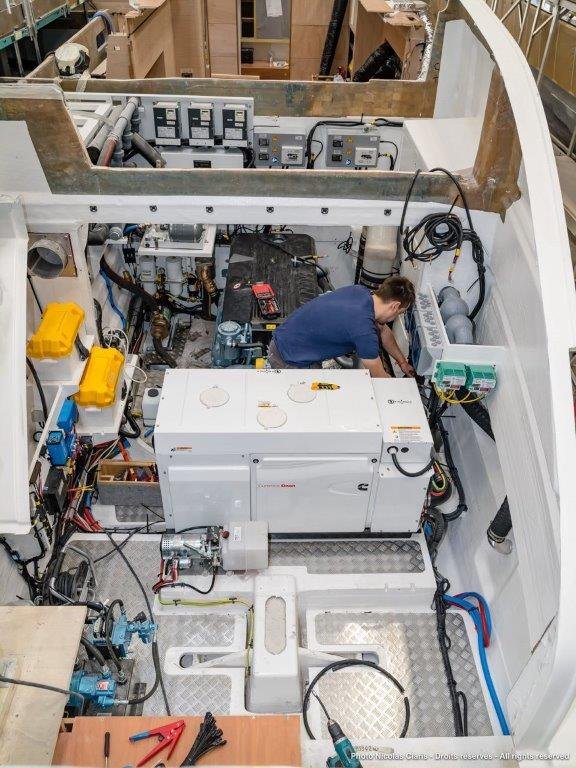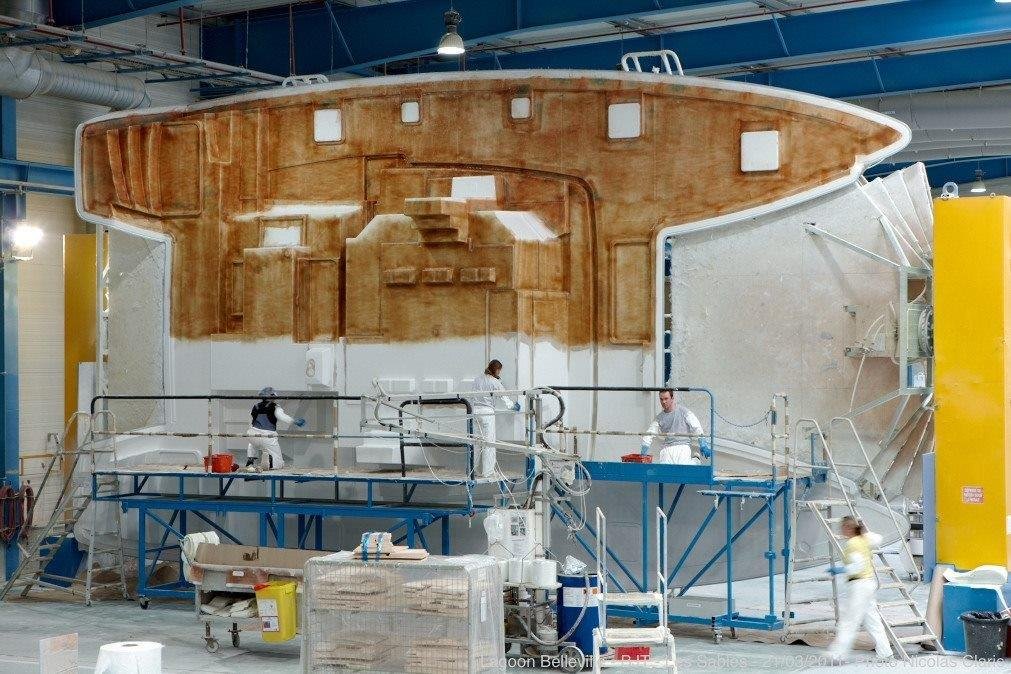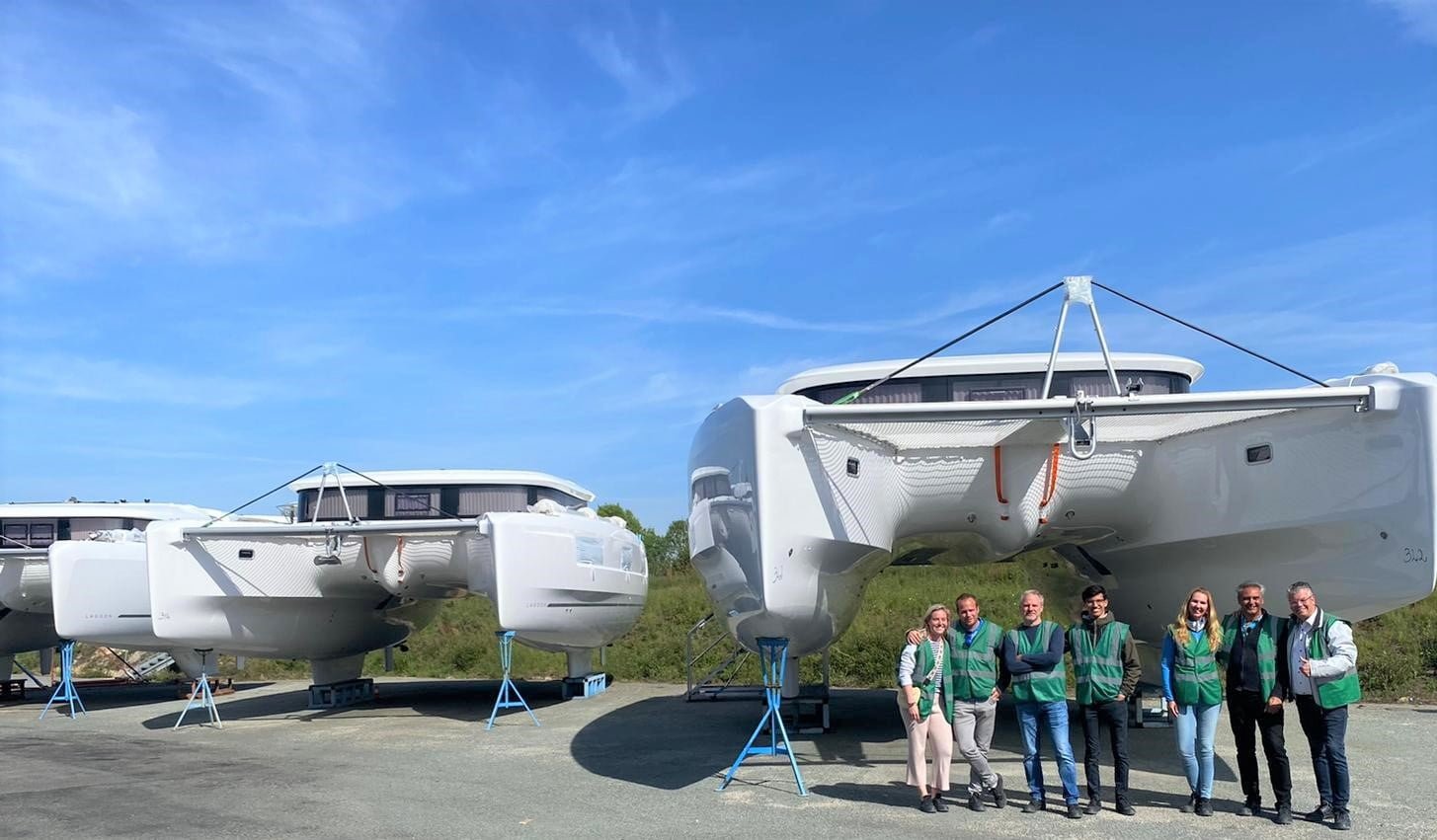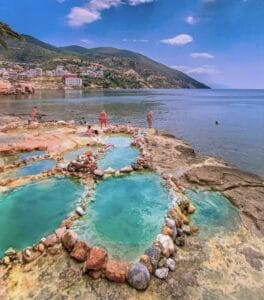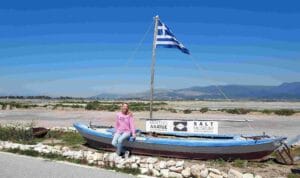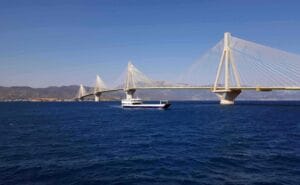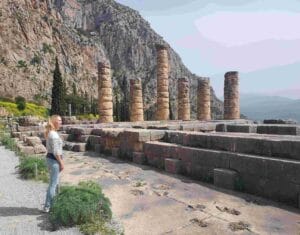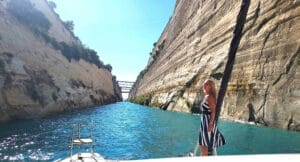When we were in Le Havre, we made an appointment with Hemmo Dijkstra, our boat dealer in the Netherlands, to visit the Lagoon factory in Bellevigny which is about 4 hours driving south of le Havre, in the province of the Vendée. Hemmo was there with some new catamaran clients who have their ship build in 2022 and he invited us to visit the factory to see how catamarans are fabricated. This was actually an old appointment we made in 2020, which was postponed because of Covid-19, but could be kept now in 2022!
So we rented a car in Le Havre and went off for a road trip to visit the Lagoon factory! On our trip to Bellevigny, we passed the city of Le Mans, famous for the race ‘24 Hours of Le Mans’. Since Gilles likes racing and used to race himself, we stopped to watch an actual race that was happening there with classic race cars like Ferrari 308 GTB, De Tomaso Pantera, BMW M1, Lancia Stratos. We were lucky to see that! And after we left the race, we went into the city of Le Mans again, because the circuit is open for public, so we drove a part of the 24 Hours circuit ourselves with our rental car 🙂
When we drove into the Vendée, close to the Lagoon wharf, we stayed for 2 nights in the hotel Chateau Barbiniere, a beautiful place in nature. We met Hemmo and 2 other couples at this hotel: Colin & Stephanie and Marcel & Sanjay. Their catamarans were scheduled for delivery in May and September 2022. After breakfast in the chateau, we all drove to the factory of Lagoon, which is part of the Beneteau Group. We were welcomed by 2 Lagoon workers who gave us a tour of 3 hours in the productionhall. We were impressed to see all the manual labor and qualitychecks! The factory is active for 24 hours with 3 shifts of 8 hours, and every 8 hours they produce 1 catamaran (size 42 and 46, the 2 most popular sizes of Lagoon catamarans). So 3 catamarans are produced per day.
We were shown the production process in 3 stages while walking around in the factory. We saw about 50 catamarans in the making, each of them a little bit further completed in the production process:
- The mold: the start is to make the ship’s hull. To do so, they use a ‘template’, which is a green mould. They prepare the mould with a wax, then they spray gelcoat over it and put handcut fiberglass pieces over it. When we entered the factory, we saw ladies cutting all the textiles of fiber glass. A lot is manual labor in this factory, we did not see 1 robot arm! After that, they inject by vacuum process a clear polyester resin and wait for it all to harden. Now you have the basic shape of the boat. On this shape, balsa wood is applied and another layer of polyester to confine everything. In special areas where there can be pressure points on the ship like on the steps, near the mast, they apply extra fiberglass by hand for reinforcements. At the end of stage 1, they have produced 2 molds: the bottom half (= hull) and top half (=upperdeck) of the ship. The ship needs to be ‘open’ for stage 2 to put in the interior stuff.
- The interior: now all plumbing and electricity wiring can be installed in the upper half and bottom half of the ship. For example the kitchen, 3 bathrooms with 3 toilets, cabins, ventilators, windows, engines, etc. After that is done, the 2 halfs of the ship are ‘married’ (connected to each other), so now you have the shape of the catamaran as we know it. The ship is placed in an inner swimmingpool in the factoryhall to test if the ship is waterproof, to test the working of the engines, etc.
- The commissioning: now the ship is ready to be put outside the production hall on a big parking lot to be kept ‘in store’. Every 8 hours a new ship is transported there. We saw about 50 ships standing outside to wait for stage nr 3. This is the transport of the catamarans on road for 50 kilometers to the coast, to the harbor of Sable d’Olonne. Imagine a truck with a ship of 8 meters wide and 12 meters long being driven on the highway! In the harbor of Sable d’Olonne, the last stage will happen: rigging, antifouling is applied, bedclothing, etc. So the finishing of the boat for sailing and living on it. The clients get the news about 1 month earlier when their boat can be picked up in the harbor. And they have a time block of about 1 week to sail the boat out of the harbor, because Lagoon needs to put 3 other new boats in the water, that have been waiting that day!
We were impressed to see the whole production process, the number of quality checks that are being done and all the manual labor. We got a much better understanding of the inside of our boat and how solid and safe it is!
After the impressive factory visit, we went for a great lunch together at an Oyster bar at a special location in the grasslands by the sea, where we talked about sailing and enjoying life! Thank you all, Nautisch Kwartier, Lagoon, Colin & Stephanie and Marcel & Sanjay for a wonderful time!

